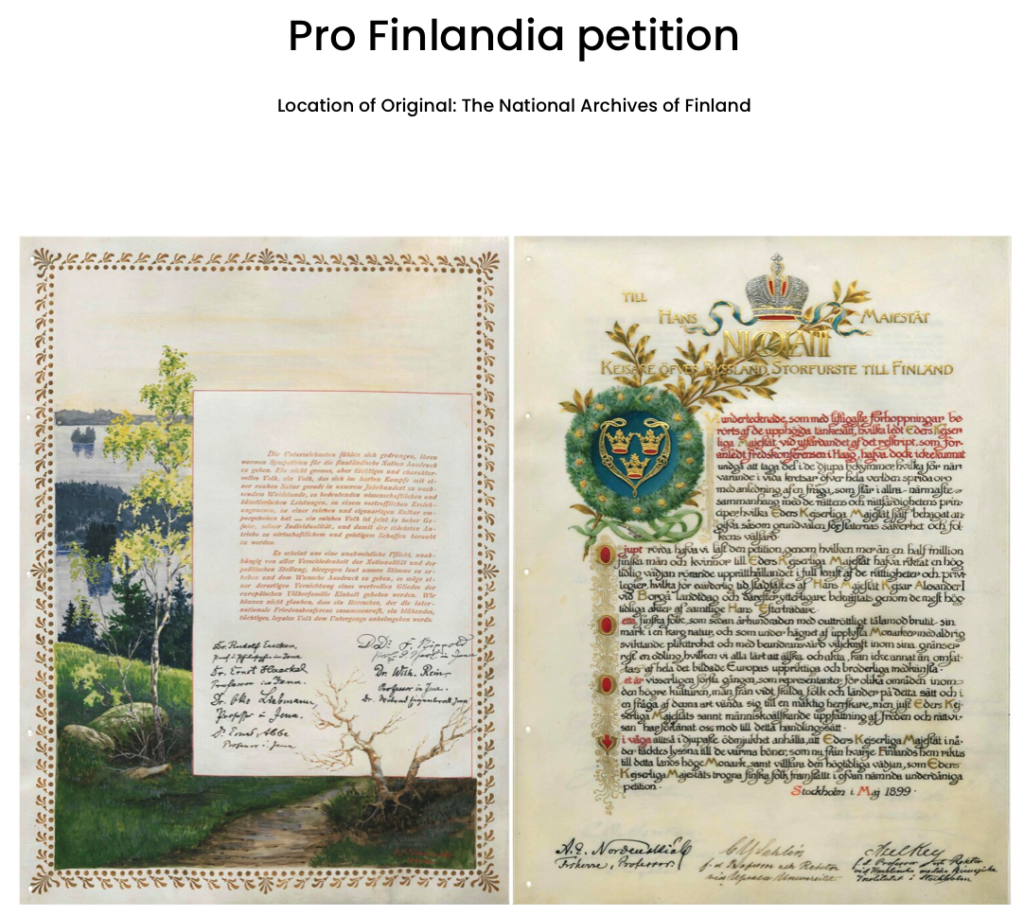The exhibition currently on display at the “Museum am Dom” in St. Pölten on the theme of “The Making of Europe – History, Memory and Myth of a 1000-Year Europeanism“, which was developed as part of the “Digital Treasures” project funded by the European Commission, is an excellent example of the timelessness of the subject. Each of the documents, carefully selected by the archives involved in the conception, symbolizes a particular aspect of European identity, the exact definition of which is still being struggled over today.
One of these documents will be presented here as an example. It is a source document that has gone down in history as the “Pro Finlandia Petition”. It takes the viewer to the time of the struggle of the people of Finland for their independence and self-determination at the turn of the 19th century. Finland had been incorporated into the Russian Tsarist Empire since 1809 as a Grand Duchy with a certain degree of internal autonomy. However, it was precisely this autonomy that was opposed to the Russification policy embodied by Tsar Nicholas II in the late 19th century and was to be eliminated by a corresponding imperial manifesto.
Since the petitions and activities on the part of the Finnish population to at least leave the status quo did not find a hearing at the tsar’s court, an unprecedented Europe-wide initiative in the interest of Finnish emancipation was launched in 1899. In just three months, no fewer than 1064 signatures were collected from prominent public figures in the fields of science and art in twelve countries, demanding the inviolability of Finnish autonomy. Among the signatories were prominent names such as Florence Nightingale, Émile Zola, Anatole France, Herbert Spencer, Theodor Mommsen, Emilio Brusa, Vito Volterra, Edvard Grieg, Henrik Ibsen or Adolf Erik Nordenskiöld, who were regarded as distinguished and respected opinion leaders both in their countries and on an international level.

Particularly noteworthy is the highly individual and in many cases splendidly executed cover pages of the petition in the individual states, which not least also represent the cultural diversity of Europe. In the end, the petition was not handed over because the tsar refused to accept it. Nevertheless, the “Pro Finlandia Petition” is and remains a significant testimony to lived solidarity with the legitimate interests of smaller ethnic and national groups threatened by autocratic and authoritarian systems of rule. Even then, it took courage and idealism to stand up to a major European power of the time, all the more so because the petition was a private initiative. These qualities are still indispensable prerequisites today in order to be able to stand up against state-directed falsification of history and authoritarian, inhuman practices, which are still part of the current reality in Europe.
The example presented here shows that unremitting efforts can eventually be crowned with success, for strengthened by the awareness of European solidarity, the Finnish National Assembly adopted a Declaration of Independence in 1917, thus making the country a sovereign nation-state.
Written by Karl Heinz, International Centre for Archival Research
